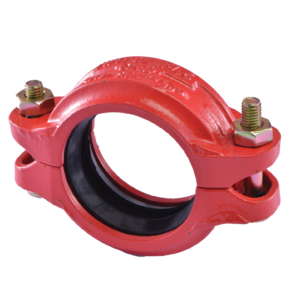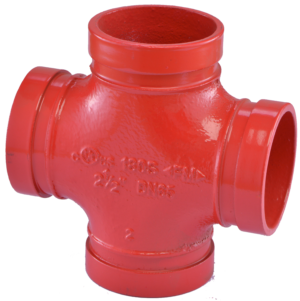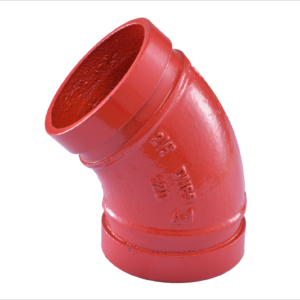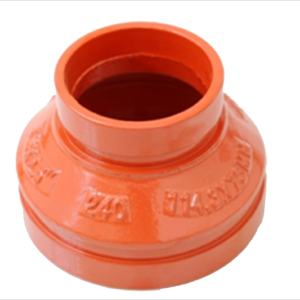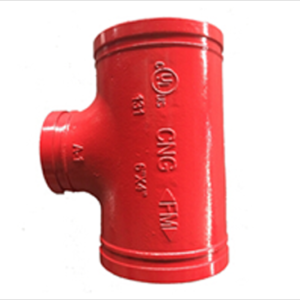Mechanical Joint and Fitting
Best Seller of Mechanical Joint Fittings in Malaysia
VIC Engineering is a leading supplier of high-quality mechanical joint and fitting products in Malaysia. With years of experience, we have established ourselves as a best seller of mechanical joints and fittings in firefighting products in Malaysia. We offer different joints and fittings, including couplings, crosses, elbows, reducers, tees and more.
Frequently Asked Questions on Fire Mechanical Joint Coupling
What is a mechanical joint in a pipe of a firefighting system?
A mechanical joint in a pipe is a type of connection used to connect pipes, valves, and other components of a firefighting system. It typically consists of a bell with a flange cast integrally with it, a cast or ductile iron gland, and a rubber gasket. The gasket is compressed using a mechanical device, creating a positive seal that ensures the flow of water or other extinguishing agent through the system.
How do mechanical joints work in a fire protection system?
Mechanical joints in fire protection systems are engineered to endure high temperatures and uphold their structural soundness in the event of a fire. These joints ordinarily include fittings, nuts, bolts, and gaskets that secure the connections within the system. When exposed to heat, the gaskets and sealing materials within the joints expand to produce a tight seal, effectively containing the spread of fire and smoke. This sealing mechanism is critical in preserving the integrity of the fire protection system, guaranteeing that water or other fire-suppressing agents can flow smoothly to extinguish the fire and shield the surrounding areas.
Where are mechanical joints used?
Mechanical joints are used in various mechanical parts of a fire protection system to ensure proper connections and maintain the system’s integrity. Some common areas where mechanical joints are utilized in a fire protection system include:
- Pipe connections: Mechanical joints are used to connect different pipes to ensure a secure and leak-free connection.
- Fittings: Mechanical joints in fittings allow changing the direction, size, or connection type to ensure a reliable and tight fit.
- Valves: Mechanical joints are used in valves, including control valves, check valves, and alarm valves for the connection to the piping system.
- Sprinkler heads: Mechanical joints that withstand high temperatures and prevent leakage, ensuring that the sprinklers can activate when exposed to heat.
- Fire hydrants: Mechanical joints are utilized in fire hydrants to connect the hydrant to the underground water supply.
What are the types of mechanical joints?
There are two primary categories of mechanical joints:
- Permanent joints, including welded joints, brazed joints, and soldered joints. They are designed to be difficult or impossible to disassemble. These joints have high strength and are ideal for applications where the joint will not need to be taken apart.
- Temporary joints, including the bolted joint, screw joints, clamp joints, compression joints, and knuckle joint. They are designed to be easily assembled and disassembled. They are typically less durable than permanent joints but offer flexibility and ease of disassembly.
What are the common causes of failure in a mechanical joint?
There are several common causes of failure in mechanical joints, which include:
- Improper installation: When mechanical joints are not installed correctly, they can fail to provide a secure and leak-proof connection. This can be due to incorrect tools, not tightening bolts or screws to the correct torque values, or not aligning the components.
- Overloading: Applying too much force or weight on a joint can cause it to fail. This can occur due to additional weight, pressure, stress, or vibration. Overloading can cause bolts to break, screws to shear, or welds to crack.
- Corrosion: Exposure to corrosive environments may cause joint failure due to material rusting, pitting, or weakening. This is especially true for metal joints, which corrode over time.
- Wear and tear: Mechanical joints that frequently use can wear out over time, causing them to fail. This can be due to components in special conditions like fatigue, erosion, friction, or abrasion.
What is the difference between mechanical joints and restrained joints?
The main difference between mechanical and restrained joints is how they handle longitudinal forces in a piping system.
Mechanical joints rely on the tensile strength of bolts or other fasteners to hold the joint together and transmit longitudinal forces along the length of the pipe. They can be used in piping systems with little thermal expansion or contraction or where the piping is not subjected to significant external forces.
Constrained joints, on the other hand, have mechanisms that clamp or lock the joints together to prevent axial movement and separation. These joints are designed to handle longitudinal forces from internal pressure and external loads such as earthquakes, soil settlement or water hammer. Constraints can be achieved in various ways, including mechanical devices, keylock systems or welded connections.

